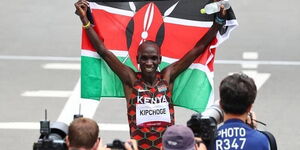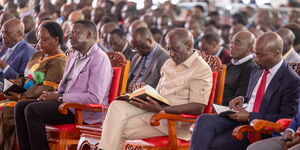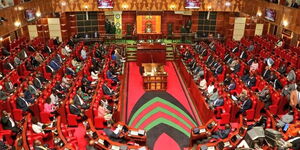Interior Cabinet Secretary Kithure Kindiki has been causing a buzz over pictures posted on his official social media handles showing him inspecting guards of honour in different counties.
As online conversation would have it, Kenyans who took a keen interest in the photos noticed that there was always one officer marching in the opposite direction.
This led to speculation that the officers are not highly trained or properly drilled on such authority recognition protocols.
Some Kenyans went ahead to request CS Kindiki and relevant employment authorities to terminate the officers from service.
Arguing their case, Kenyans have drawn contrast to guards of honour inspected by President William Ruto during national events which are in stark contrast to Kindikis.
When the Head of State is inspecting a parade, all police officers march in the same direction.
A retired police officer commenting on the matter remarked that there was nothing unusual from one police officer marching in the opposite direction.
He stated that this was the highest form of professionalism unlike what Kenyans online were speculating.
“A parade commander who is a non-commissioned officer (NCO) seeks permission to match off the parade with guard on duty remaining,” the decorated former police officer enlightened Kenyans.
“As the team leaves the venue, one officer on duty turns in the opposite direction to head to the office,” he explained.
A non-commissioned officer is an officer who has yet to earn a rank or commission.
In the Police or Military, NCOs hold leadership positions within their units but rank lower than commissioned officers.












